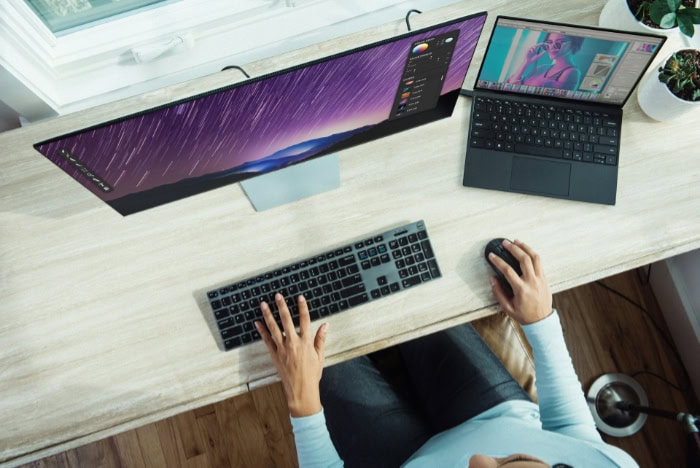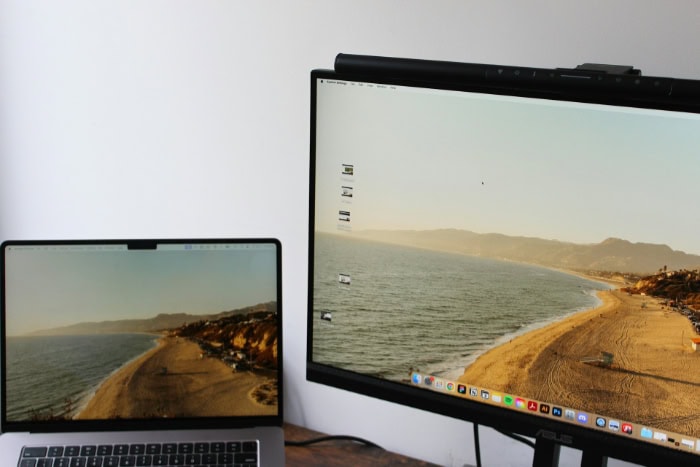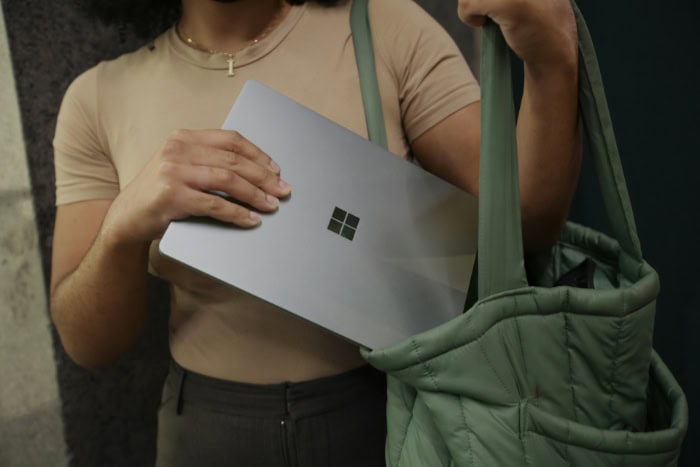Laptop vs. Desktop: Comparing Portability and Performance

Choosing between a laptop and a desktop can feel like a significant decision, especially with the variety of options available today. Both devices serve as powerful tools for work, entertainment, and creativity, yet they cater to different lifestyles and priorities.
For some, portability and convenience are essential, while others prioritize raw performance and customization.
The choice often comes down to how and where you plan to use your computer. Are you frequently on the move or need a versatile device that fits into different environments? Or do you prefer a powerful, stationary setup tailored to demanding tasks?
Portability vs. Stationary Use
When choosing a computer, one of the most noticeable differences between laptops and desktops is how they fit into your daily routine. The contrast between portability and stationary use plays a significant role in determining which device suits your lifestyle.
Some users prioritize the ability to take their device anywhere, while others value the stability of a fixed setup.
Laptops: Designed for Mobility
A laptop is built with portability in mind, making it the go-to choice for users who need flexibility in where they work or play. The compact design, lightweight form factor, and built-in battery allow laptops to adapt to various environments, from coffee shops to classrooms and even outdoor settings.
This level of convenience makes laptops particularly appealing to students, remote workers, and frequent travelers.
For students, the ability to carry a single device between classes, libraries, and home is invaluable. Similarly, remote workers often rely on laptops to switch seamlessly between their home office and coworking spaces.
Even professionals attending meetings or conferences can appreciate the ease of slipping a laptop into a bag and setting up their workspace in seconds.
However, this mobility does come with trade-offs. The compact design limits screen size, keyboard comfort, and hardware power compared to desktops.
Additionally, extended use without access to a power source can be challenging, as laptops rely on batteries that eventually need recharging. Despite these limitations, the freedom to work or relax virtually anywhere remains one of the biggest advantages of laptops.
Desktops: Built for Stationary Setups
Desktops, on the other hand, are designed to stay in one place. These machines are typically larger and require a dedicated workspace, complete with a monitor, keyboard, mouse, and sometimes additional peripherals.
While this stationary nature might seem like a disadvantage at first glance, it offers several benefits that appeal to users who prioritize stability and performance.
For one, desktops are ideal for creating a focused work or gaming environment.
A dedicated desk with a desktop computer often leads to fewer distractions, as the setup encourages users to remain in a single location for tasks like studying, working, or gaming.
Gamers, in particular, benefit from having a permanent station where larger monitors and high-performance hardware can enhance their overall experience.
Additionally, the stationary design allows desktops to accommodate larger components, better cooling systems, and multiple peripherals.
This makes them perfect for those who need a powerful and reliable machine for demanding tasks like video editing, graphic design, or software development.
While desktops lack the portability of laptops, they compensate with a level of performance and comfort that mobile devices cannot achieve.
Performance and Hardware Capabilities

Performance is often a deciding factor when choosing between laptops and desktops. The ability of a computer to handle tasks efficiently is determined by its hardware capabilities, including the processor, graphics card, and cooling system.
While both laptops and desktops have made significant advancements in performance, their designs result in distinct strengths and limitations.
Processing Power
Desktops are typically unmatched when it comes to raw performance. Thanks to their larger form factor, they can accommodate more powerful processors (CPUs) and dedicated graphics cards (GPUs).
This makes desktops ideal for resource-intensive tasks like gaming, 3D rendering, and video editing, where high-speed processing and multitasking are essential. Many desktops also support overclocking, a feature that allows users to push the CPU or GPU beyond its standard performance limits for even greater speed.
Laptops, on the other hand, have made impressive strides in offering competitive performance, especially in high-end models.
Manufacturers have developed compact processors and GPUs capable of handling demanding applications, making laptops a viable option for professionals and gamers alike.
However, the physical limitations of a laptop’s size and cooling system often result in reduced performance compared to a desktop with similar specifications. For tasks like casual browsing, streaming, and office work, laptops perform exceptionally well, but they may struggle to maintain the same level of power as desktops during prolonged heavy use.
Cooling Systems
Cooling plays a critical role in maintaining a computer’s performance. Desktops excel in this area, as their larger chassis allows for advanced cooling solutions, such as multiple fans, liquid cooling systems, and even custom setups.
These efficient cooling systems help desktops sustain peak performance over extended periods without overheating.
This is particularly important for gamers, video editors, and professionals working with large datasets, as heat management directly influences the system’s reliability and speed.
Laptops, in contrast, are limited by their compact design. The smaller chassis leaves less room for airflow and cooling mechanisms.
While modern laptops include innovative cooling solutions like heat pipes and vapor chambers, they can still experience thermal throttling during intense workloads.
Thermal throttling occurs when the system reduces its performance to prevent overheating, which can be a drawback for users who rely on consistent high performance.
Despite these challenges, laptops remain a practical choice for users who value portability over maximum cooling efficiency.
Specialized Use Cases
The choice between a laptop and a desktop often depends on how the computer will be used. For gaming enthusiasts, desktops are generally the preferred option.
They offer access to powerful GPUs, higher refresh rates, and support for multiple monitors, resulting in a smoother and more immersive gaming experience.
Similarly, professionals working with resource-heavy applications, such as video editing software or CAD programs, will benefit from the superior hardware capabilities of a desktop.
Laptops, on the other hand, are better suited for everyday tasks such as browsing the web, creating documents, or streaming media. They are also a good fit for professionals who need a portable device for meetings, presentations, or working on the go.
While premium laptops with advanced hardware can handle demanding applications, they often come with higher costs and compromises in sustained performance due to thermal constraints.
Cost and Value

When purchasing a computer, cost often plays a significant role in the decision-making process. Both laptops and desktops come with varying price points depending on their capabilities, but the way their value is distributed over time differs significantly.
While laptops are often designed for convenience and portability, desktops focus on performance and long-term adaptability. These differences impact both the upfront investment and the overall value you can expect from each device.
Initial Purchase Cost
Desktops are generally more affordable than laptops when comparing devices with similar performance levels. This is primarily due to their modular design and the absence of portability-focused features.
Components like processors, graphics cards, and storage tend to be less costly in desktops because manufacturers don’t have to engineer them to fit within a compact space.
Additionally, users assembling their own desktops can choose components that match their budget, further lowering the cost of entry.
Laptops, on the other hand, tend to have a higher starting price due to their compact form factor and integrated features. Engineers invest significant effort into designing lightweight, portable devices with built-in displays, keyboards, and batteries.
These added conveniences come at a premium, even for models with mid-range performance. The compact hardware also requires specialized components, which are typically more expensive than their desktop counterparts.
For users seeking high performance in a portable package, the cost of premium laptops can be significantly higher.
While desktops may appear to cost less upfront, it’s important to consider the additional expenses involved in purchasing peripherals like monitors, keyboards, and mice.
However, these peripherals often last for years and can be reused with future systems, adding to the overall value of a desktop setup.
Long-Term Value
The long-term value of a computer depends on factors like durability, upgradeability, and adaptability to future needs. Desktops excel in this regard, offering better value over time due to their modular design.
Unlike laptops, desktops can be easily upgraded, allowing users to replace outdated components like the GPU, CPU, or storage without purchasing an entirely new system.
This flexibility makes desktops a cost-effective choice for those who want their machine to remain relevant as technology evolves.
Laptops, in contrast, have limited upgrade options. In most cases, users can only upgrade storage or RAM, and even these upgrades are restricted in some models.
As a result, laptops often have a shorter lifespan when it comes to keeping up with the demands of modern software and applications.
Once the hardware becomes obsolete, replacing the entire device is usually the only option.
However, laptops remain valuable for users who prioritize convenience. Their ability to function as an all-in-one portable device means they continue to serve their purpose effectively for those who require mobility.
Another factor to consider is repairability. Desktops typically have replaceable components, making repairs more affordable and straightforward.
Laptops, with their integrated design, can be more challenging and expensive to repair, especially if critical components like the motherboard or screen fail.
Space, Energy Efficiency, and Durability

The physical space a computer occupies, its energy requirements, and how well it holds up over time are important factors to consider before making a purchase. Desktops and laptops differ significantly in these areas due to their design and intended use.
While desktops prioritize performance and longevity, laptops focus on compactness and portability.
Space Requirements
Desktops are larger and require a dedicated workspace to function effectively. Typically, a desktop setup includes a separate monitor, keyboard, mouse, and possibly additional peripherals like speakers or external drives.
These components, along with the main computer tower, can take up a considerable amount of desk space. Additionally, proper cable management is often necessary to keep the area organized.
While desktops work well in permanent setups such as home offices or gaming stations, their size and immobility make them less suitable for users with limited space or those who frequently move their workstation.
In contrast, laptops are designed to fit seamlessly into almost any environment. Their all-in-one design includes a built-in display, keyboard, and trackpad, eliminating the need for external peripherals.
When not in use, a laptop can be easily folded and stored in a drawer, bag, or even a small corner of a desk. This compactness is particularly advantageous for users who work in shared spaces, dorm rooms, or other areas where space is at a premium.
The portability of a laptop allows it to adapt to various settings without the need for a permanent setup.
Energy Consumption
Energy efficiency is another area where laptops and desktops diverge. Laptops are designed to operate on battery power for extended periods, which requires them to consume less energy overall.
Their smaller components are optimized for efficiency, making laptops an environmentally friendly option for users who are conscious of energy usage.
This lower power requirement also means reduced electricity costs over time, especially for users who spend long hours on their devices daily.
Desktops, on the other hand, draw significantly more power due to their larger components and higher performance capabilities. Powerful processors, dedicated graphics cards, and multiple peripherals all contribute to increased energy consumption.
Gaming desktops, in particular, can use a substantial amount of electricity during intensive tasks like rendering or gaming. While this higher energy usage is justified by the superior performance desktops offer, it’s worth considering if energy efficiency is a priority.
Durability and Lifespan
Desktops are generally more durable and have a longer lifespan compared to laptops. Their stationary nature minimizes physical wear and tear, as they aren’t frequently moved or exposed to the risks associated with portability.
Additionally, desktops benefit from better cooling systems, which prevent overheating and reduce the strain on internal components over time. With proper maintenance and occasional upgrades, a desktop can remain functional and relevant for many years.
Laptops, while portable and convenient, are more prone to physical damage such as drops, spills, or general wear from being carried around. Components like hinges, keyboards, and screens are particularly vulnerable to damage with frequent use.
Their compact design also means internal components are packed tightly together, which can lead to overheating and reduced durability if not properly managed.
Despite these drawbacks, laptops are built to withstand a reasonable amount of use on the go, making them a practical option for users who prioritize mobility over longevity.
Conclusion
Laptops and desktops each bring unique advantages to the table, catering to different needs and lifestyles. Laptops shine in portability, convenience, and energy efficiency, making them an excellent choice for students, remote workers, and users on the move.
Desktops, on the other hand, excel in performance, upgradeability, and durability, offering unparalleled power for tasks like gaming, video editing, and long-term use.
Factors such as space requirements, cost, and maintenance further highlight the differences between the two. While laptops prioritize compactness and versatility, desktops provide a stable and customizable setup for users who value adaptability and long-term value.
Both options have their strengths, making the ideal choice highly dependent on individual priorities, from mobility to performance needs.


